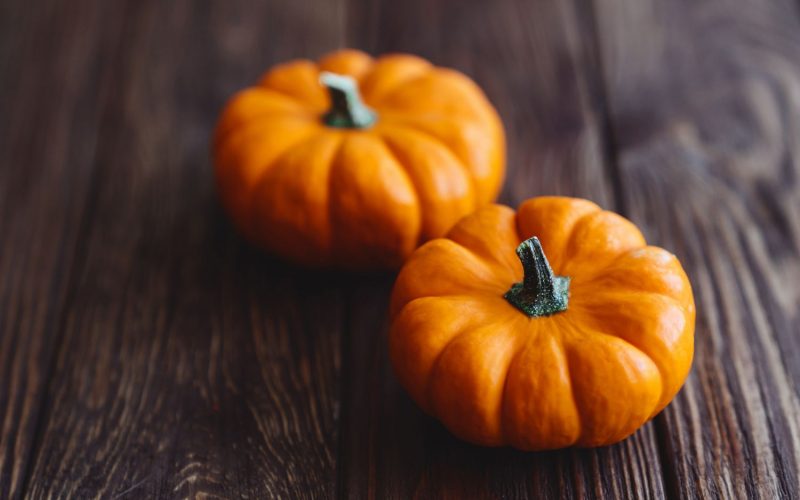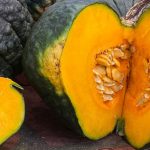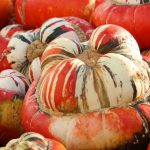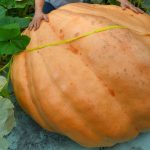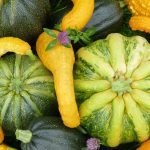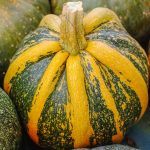Pumpkin was probably the earliest domesticated vegetable and these heirloom heroes are the pick of the patch
Words Claire Bickle
The pumpkin originated in Central America — specifically, the region that includes present-day Mexico — and fragments have been found dating back to between 7000 and 5500 BCE.
Those early pumpkins were not the sweet, orange-fleshed varieties we know today; they were bitterer, a lot smaller and grown mainly for their edible seeds.
Over the centuries, as pumpkins made their way to North and South America, Canada and eventually to Europe and further afield, selective breeding transformed these ancient cucurbits
into the many tasty, sweet heirloom varieties we know today.

With their rich history and diverse characteristics, heirloom pumpkins offer more than just a starchy kitchen staple. They’re prized for not only their unique flavours and textures but also their ornamental qualities — their varied colours and quirky looks.
These old-fashioned pumpkins maintain genetic diversity, making them favourites among gardeners, chefs and pumpkin enthusiasts.
It’s critical we keep these heritage cultivars going by growing them in our gardens, ensuring their safety for generations to come.

10 popular heirlooms
‘Rouge Vif d’Etampes’ With its deep-orange colour and flattened shape, this French heirloom is known as the Cinderella pumpkin as it’s said to have inspired the carriage in the famous fairytale.
‘Jarrahdale’ is a blue-grey pumpkin from Australia, prized for its sweet, dense flesh and stunning colouration.
‘Galeux d’Eysines’ Another French variety notable for its warty appearance, caused by the sugar content in its flesh, this one’s incredibly sweet and perfect for pies.
‘Jack B Little’ A small pumpkin growing to around 6cm in diameter and weighing just 225g, this is perfect for soups, stuffing and roasting whole. Excellent shelf life.
‘Potimarron’ Named for its rich chestnut flavour and perfect for small gardens, this rare French pumpkin is also known as red kuri.
‘Atlantic Giant’ is the world’s largest pumpkin, up to 1.8m in diameter and producing enormous orange prizewinners with an Australian record of over 740kg.
‘Turk’s Turban’ A curiously shaped French heirloom dating from at least 1820 and striped orange, white and green. No two fruits are alike.
‘Pennsylvania Dutch Crookneck’ This amazingly curved 19th-century old-timer is popular in Amish communities because of its sweet deep-orange flesh, perfect for pies and desserts.
‘Ironbark’ An iconic Australian heirloom dating back to the goldmining era with dark, thick, bumpy skin said to be so hard you need an axe to split it open. The bright-orange flesh is sweet and delicious.
‘Kumikumi’ A Maori heirloom that can be cooked whole for hangi. The young fruit, somewhat like a squash, can be sautéed, mashed, grated or pickled while the mature fruit is better boiled or roasted.

Cultivating heirloom pumpkins
- Choose a sunny, well-drained location for planting.
- Add organic matter, such as compost or manure, to provide the soil with nutrients.
- Plant directly into hilled mounds in late spring to early summer once the soil has warmed. Heirloom pumpkins require ample space to spread, so it’s important to plant seeds at least 1m apart.
- Water regularly but be careful not to overwater, as this can lead to rotting.
- Regular feeding with a balanced organic fertiliser will support healthy growth and fruit development.
- Mulch around the plants to help retain soil moisture and suppress weeds. Mulching can also prevent pumpkins from being in direct contact with damp soil, which causes damage.
- Harvest pumpkins when fully mature and the skin is hard. Leave about 10cm of stalk on each pumpkin.
- Store pumpkins in a cool, dry place until ready to use.
Pest and disease management
Pumpkins can be susceptible to pests such as squash bugs, cucumber beetles and vine borers.
Organic pest-control methods such as introducing beneficial insects and using row covers can help protect the plants.
Watering early in the morning will allow plants to dry out during the day and avoid damp foliage overnight, which can lead to fungal issues such as powdery mildew. Use organic fungicides to remedy.

Nutritional benefits
Heirloom pumpkins are not only tasty but also highly nutritious and rich in vitamins A and C, fibre, potassium and antioxidants.
Pumpkins contain the compound beta-carotene, reputedly linked to improvements in eye health, immune function and skin.
Heirloom pumpkins can be used in a variety of sweet and savoury dishes: in soups, salads and stews; steamed, roasted or baked in muffins, scones and the like; made into chips and more.
The seeds, or pepitas, are a nutritious and delicious snack that can be eaten fresh or roasted. Pumpkin flowers are also edible and, like zucchini flowers, can be stuffed, battered and fried.

Pumpkin label
Common names: Pumpkin, winter squash
Botanical name: Cucurbita maxima
Family: Cucurbitaceae
Aspect & soil: Sun; deep, moist, fertile soil
Best climate: All, but in cold areas wait for warmer weather
Habit: Annual vine
Propagation: Seed, seedling
Difficulty: Easy
This article first appeared in Good Organic Gardening.
